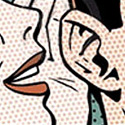Dust Debris Form Planets

Understanding where planets come from is always on the forefront of Astronomers’ minds. So hypothesis’ and theories of where and how new planets are formed are made. One such hypothesis is that there are collisions between asteroids and comets that were created from proto-planetary disks (cloud surrounding and newborn star). The Pictor (“painter’s easel”) is one dust disk that surrounds Beta Pictoris, the second brightest star.
There was a technique called coronapraphy that was discovered in 1984 that detected that light around a star when the star was blocked out. Hence, the discovery of proto-planetary disks. Over the years this highly useful technique has been refined and updated to help in the research of this phenomenon.
To break this all down, the researchers believe that the dust disks are made up of bacteria-size dust bunnies and ice allowing life to be formed. Motohide Tamura who leads the team says “few people have been able to study the birth place of planets by observing polarized light with a large telescope. Our results show that this is a very rewarding approach. We plan on extending our research to other disks, to get a comprehensive picture of how dust transforms into planets.”

Understanding where planets come from is always on the forefront of Astronomers’ minds. So hypothesis’ and theories of where and how new planets are formed are made. One such hypothesis is that there are collisions between asteroids and comets that were created from proto-planetary disks (cloud surrounding and newborn star). The Pictor (“painter’s easel”) is one dust disk that surrounds Beta Pictoris, the second brightest star.
There was a technique called coronapraphy that was discovered in 1984 that detected that light around a star when the star was blocked out. Hence, the discovery of proto-planetary disks. Over the years this highly useful technique has been refined and updated to help in the research of this phenomenon.
To break this all down, the researchers believe that the dust disks are made up of bacteria-size dust bunnies and ice allowing life to be formed. Motohide Tamura who leads the team says “few people have been able to study the birth place of planets by observing polarized light with a large telescope. Our results show that this is a very rewarding approach. We plan on extending our research to other disks, to get a comprehensive picture of how dust transforms into planets.”



